Updated September 19 | 9:00 a.m. PDT
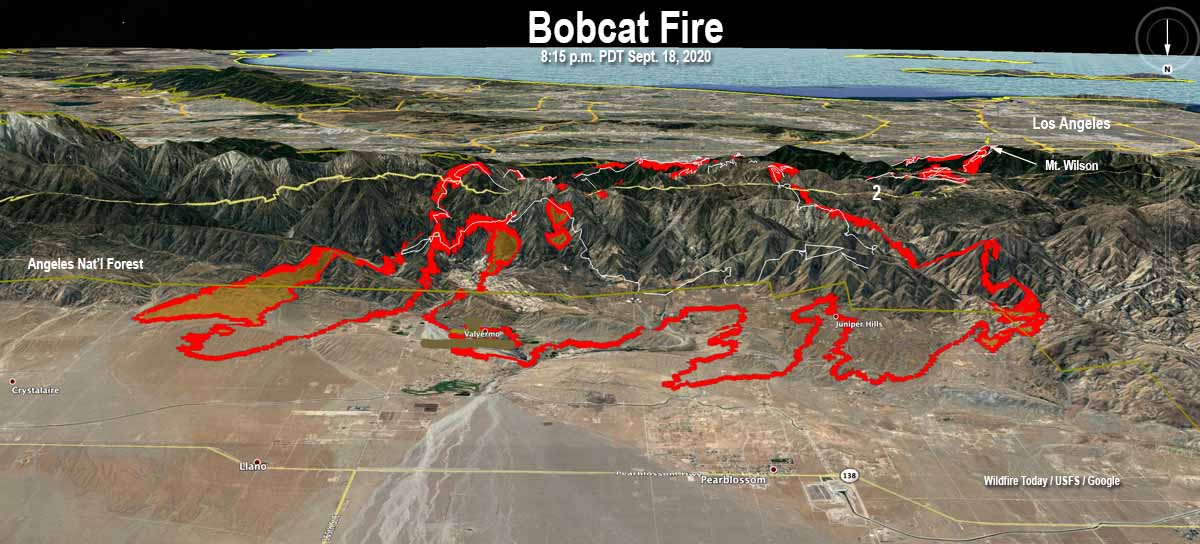
Friday afternoon strong winds gusting up to 35 mph pushed the Bobcat Fire north down-slope out of the Angeles National Forest into the Antelope Valley foothill communities of Juniper Hills and Valyermo. Structures burned, but no details have been released.
The Incident Management Team reports that the perimeter now envelops 91,017 acres.
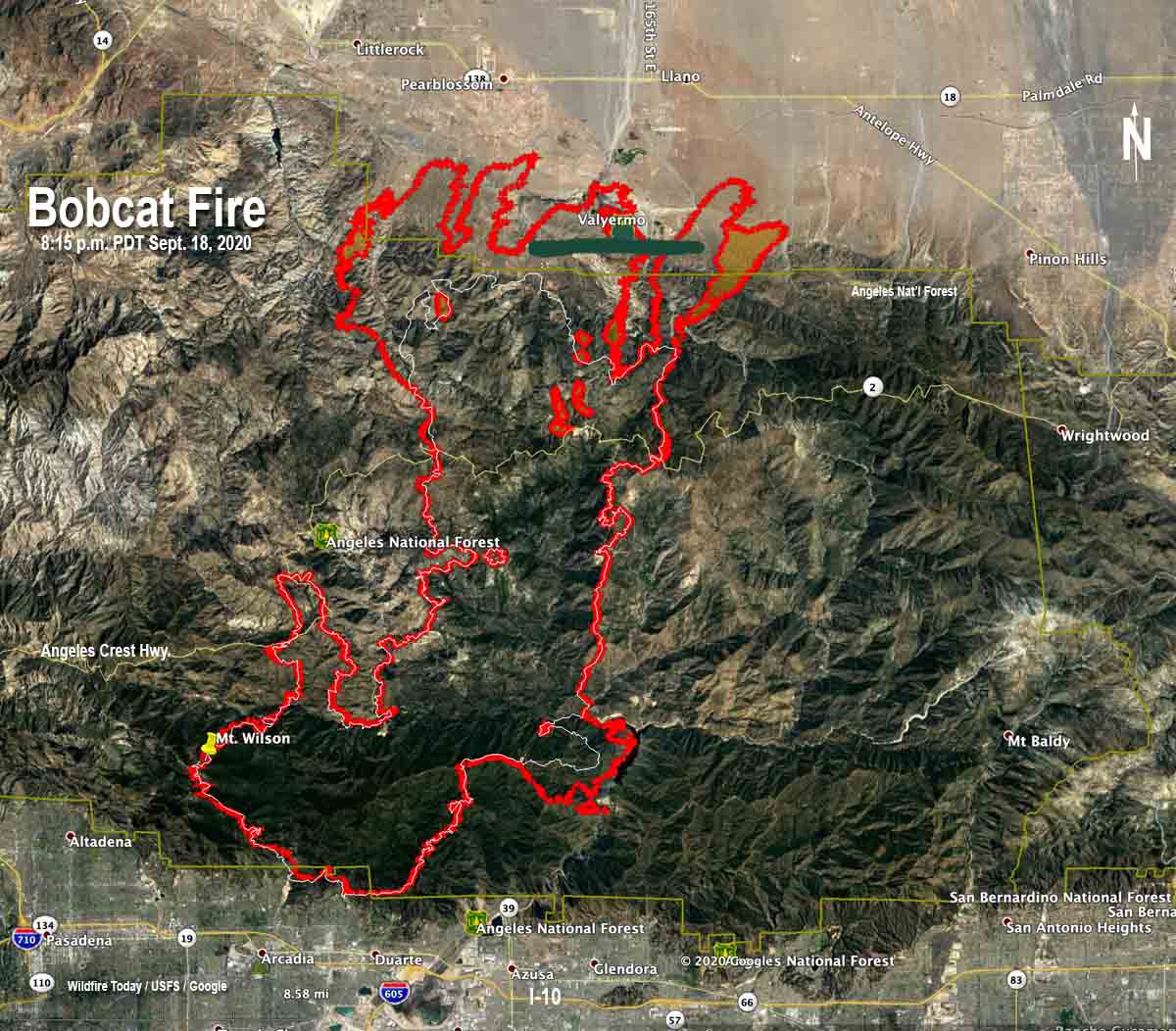
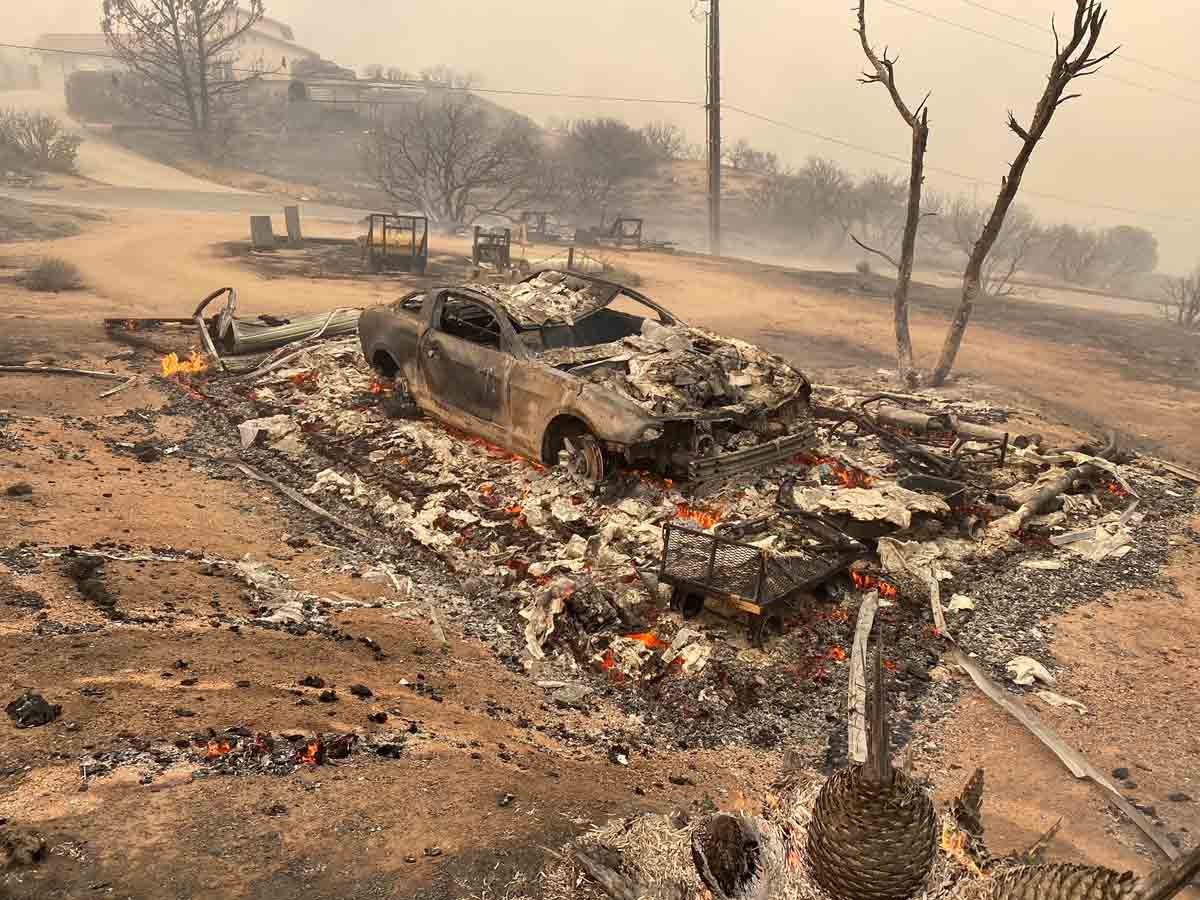
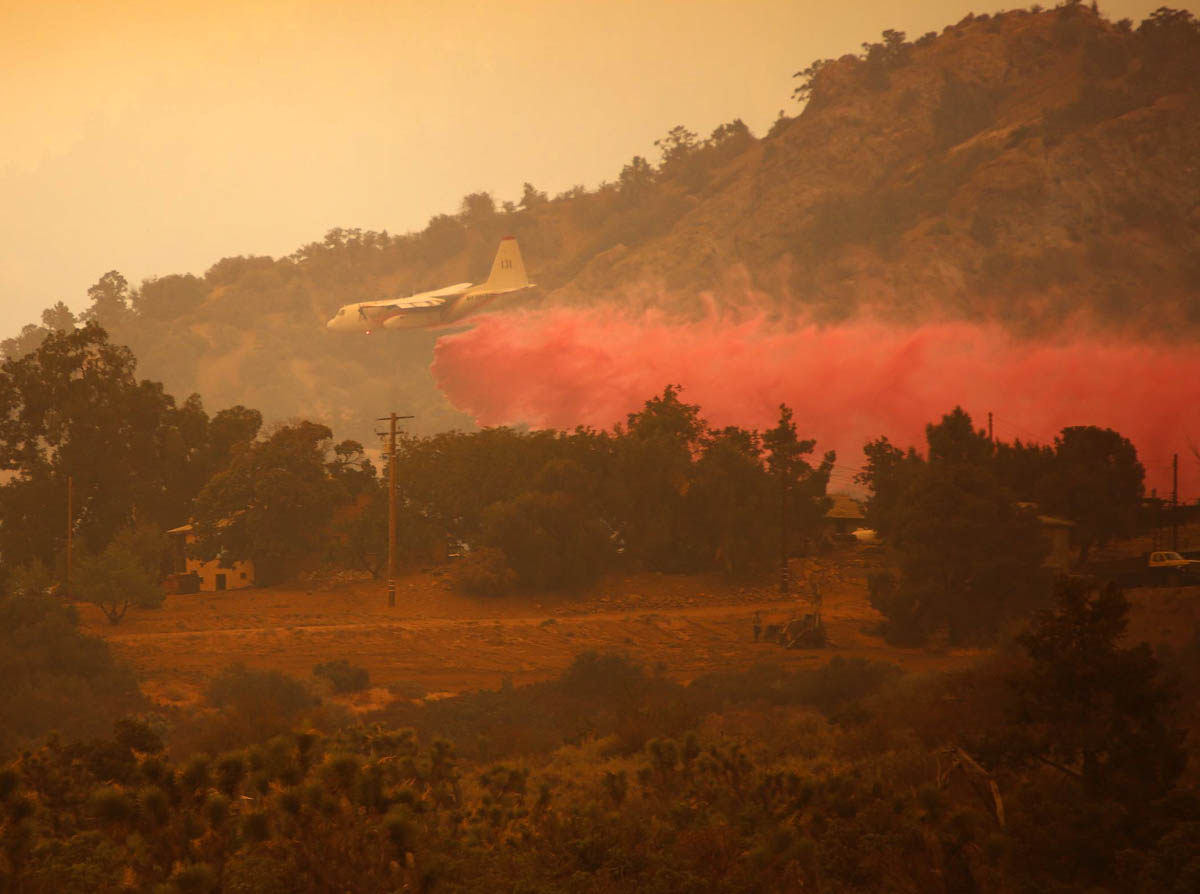
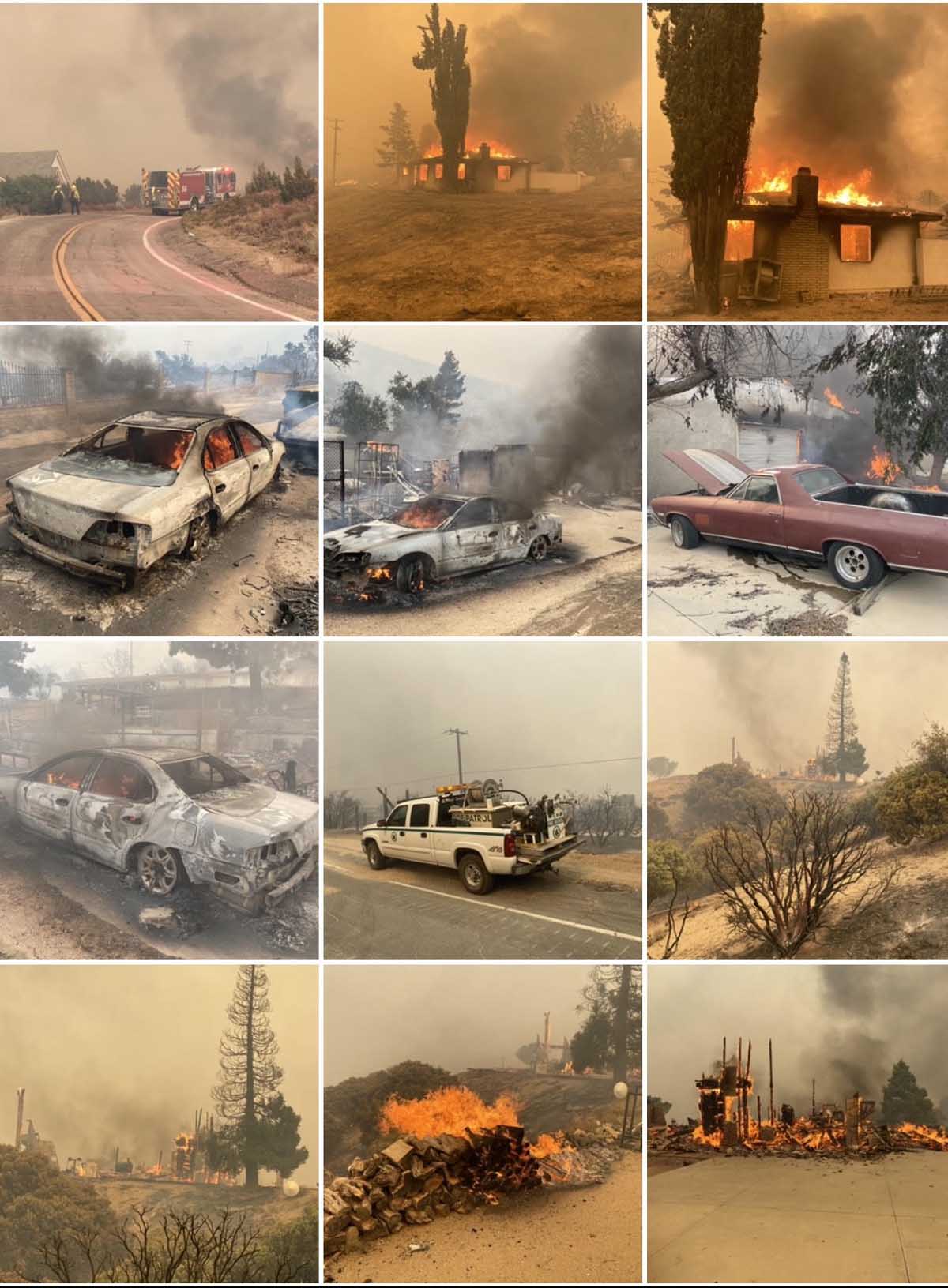
Updated September 18, 2020 | 7:06 p.m. MDT
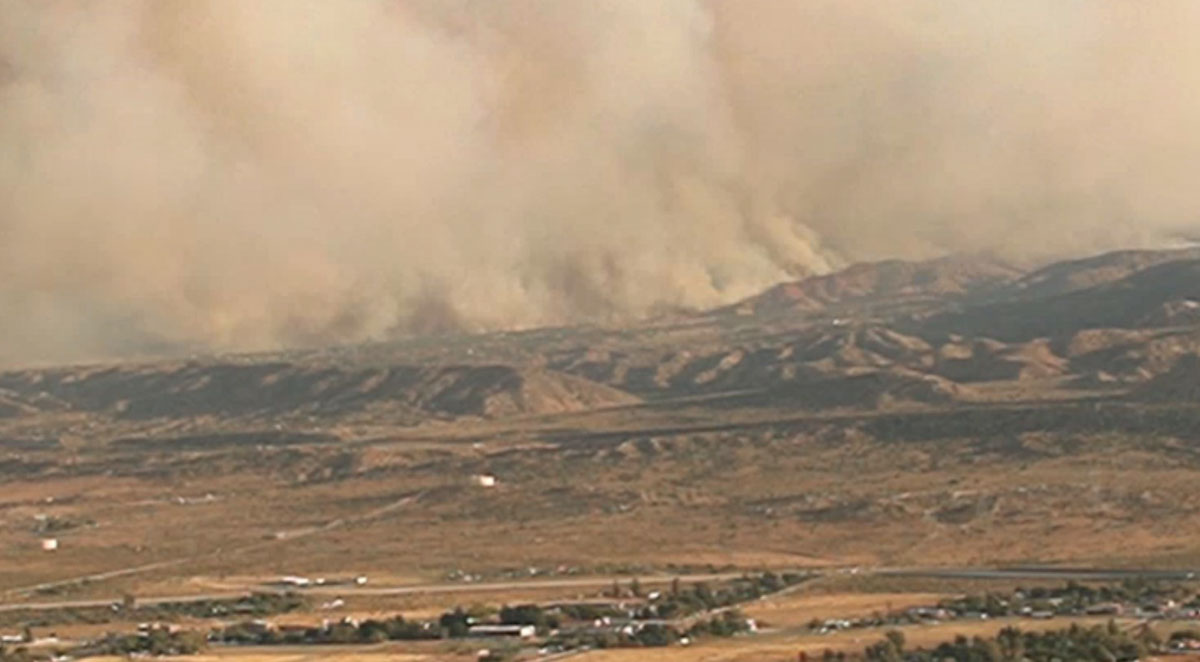
The Bobcat Fire is being pushed northeast into the Antelope Valley by strong winds out of the southwest — 10 mph hour gusting to 35 mph, with 90 degree temperatures and 9 percent relative humidity.
The incident management team had constructed contingency control lines with dozers to prevent the fire from getting into the valley, but the strong winds pushed the flames across the lines. An additional 60 fire engines were called in Friday to augment the forces already on scene.
The LA County Sheriff has issued new evacuation orders and/or warnings for the north and east sides of the fire.
Many of the 10 air tankers were reloading with retardant at the San Bernardino Airport, but late in the afternoon the air tanker base there was running very low on retardant, and directed that the tankers go to alternative bases for their next load. They were expecting that by the time the load after that was needed, the temporary shortage would be mitigated.
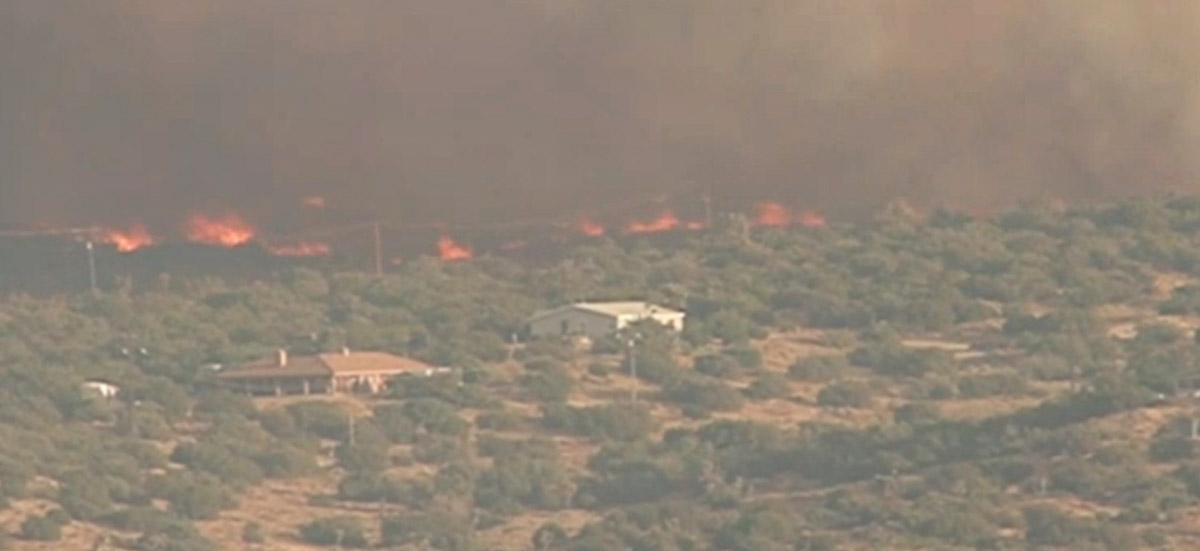
Updated September 18, 2020 | 4:45 p.m. PDT

Friday afternoon the northern end of the Bobcat Fire pushed down into the foothills at Juniper Hill and Valyermo. Some structures in the area were destroyed and more evacuation orders were issued. The LA County Sheriff has the latest evacuation information.
Firefighters had to briefly shelter in Fire Station 79 on Valyermo Road as the fire moved through the area. There was a report that a pumphouse at the station burned when the fire spread across the road.
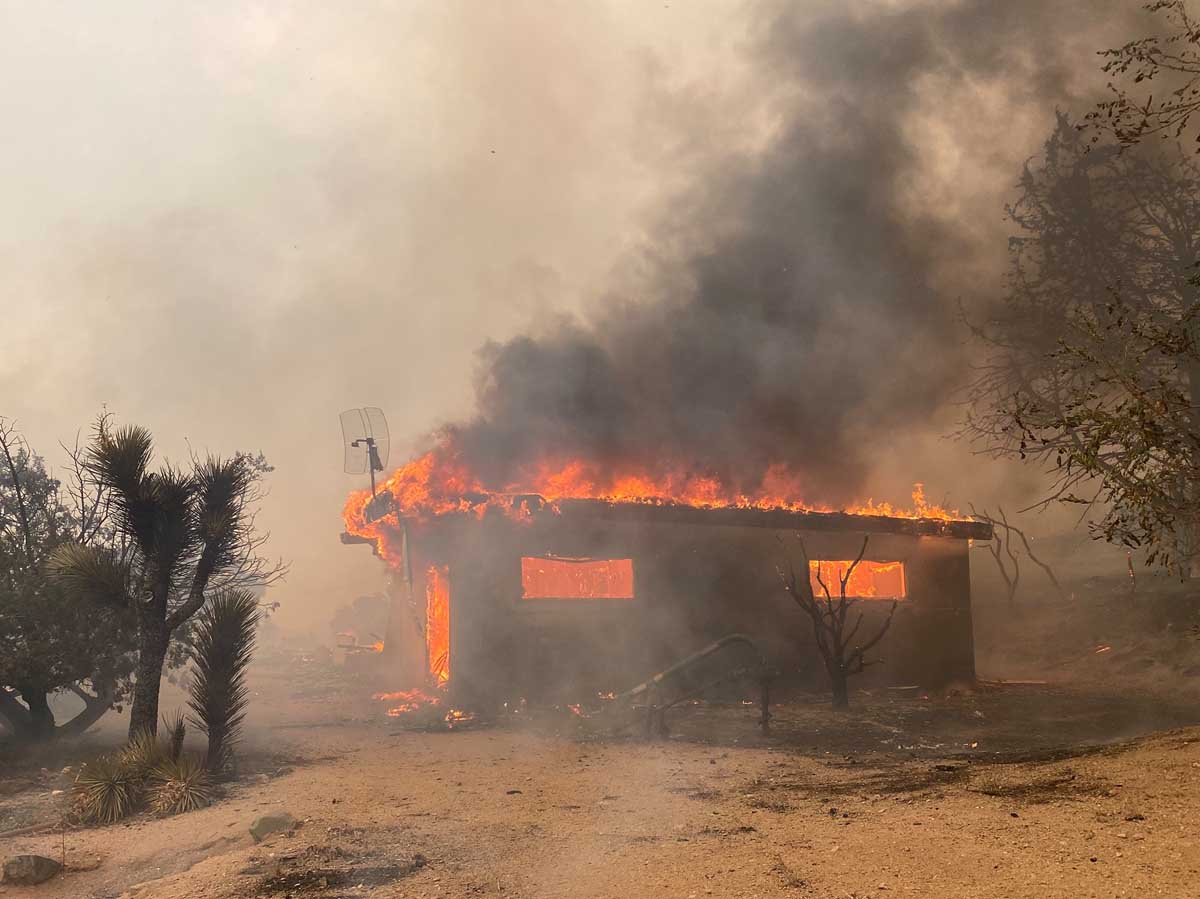
While the fire burns into the desert floor, it is also pushing west, again threatening Mt. Wilson Observatory where approximately six large air tankers are working to slow the spread.
A helicopter is igniting a burning operation, or “strategic aerial firing”, on the eastern perimeter to strengthen containment lines and slow the spread to the east.
There are reports that the community of Big Pines at the intersection of Big Pines Highway and Angeles Crest Highway/2 is threatened.
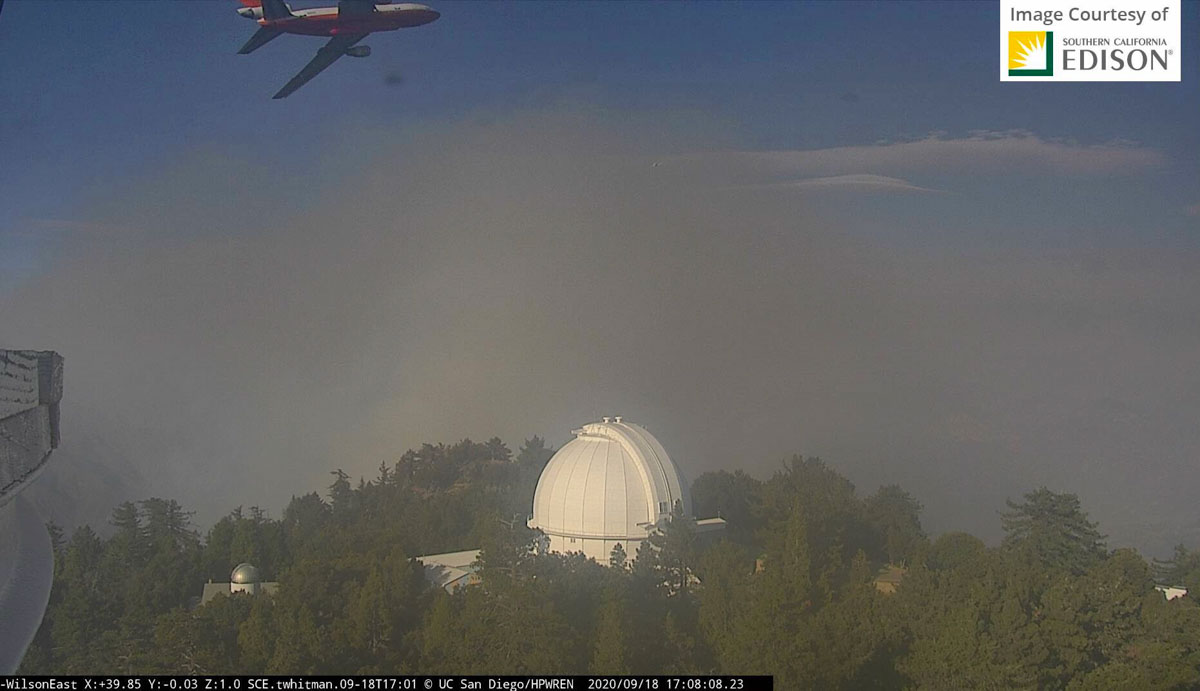
September 18, 2020 | 8:33 a.m. PDT

The Bobcat Fire in the Angeles National Forest north of Arcadia continued its spread north on Thursday, advancing north of Highway 2.
From the Incident Management Team:
“The Bobcat Fire had very active fire growth in the north end of the perimeter where it reached Juniper Hills and the communities around it, additional aviation assets were requested. Due to the increased fire activity and spread, evacuation orders were expanded to include the northern foothill communities. As the top end of the fire heads northwest and northeast, crews and aviation assets continued to work to keep the fire south of Pearblossom.
“On the west end of the fire, firefighters will be scouting for additional opportunities to build both indirect and direct fire lines to protect the area around Chilao. Fire activity remained active around Mt. Wilson with crews and equipment working very hard to protect infrastructure. To the east, downslope winds activated eastward fire movement near the San Gabriel Reservoir.”
An evacuation warning was issued Thursday night for residents in the unincorporated community of Wrightwood approximately 10 miles east of the fire.
The blaze was mapped overnight at 60,557 acres.
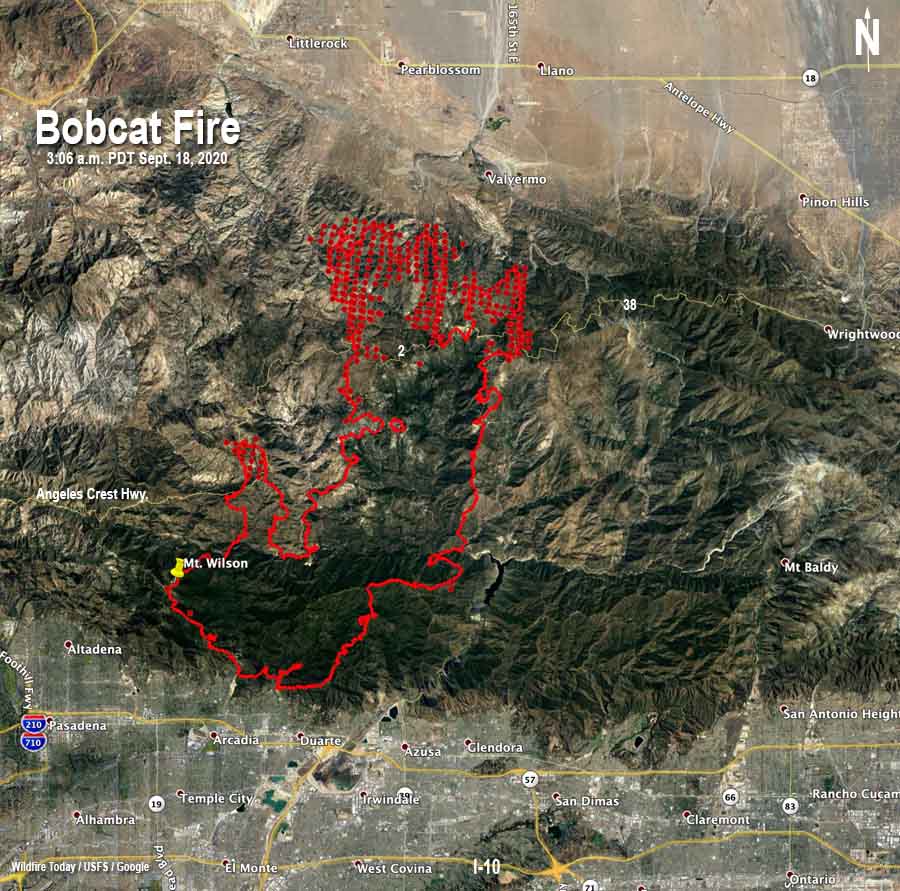

I have so much to say. I used to be a volunteer fire lookout in the San Bernardino mtns. And have had a lot of fire behavior training. I lived in juniper hills from 2006 – 2013 went thru the station fire in 2009. Nothing ever came close to the bobcat fire. When I lived there I took a lot of walks in the area especially to the south up against the San Gabriel mtns. I noticed groves and groves of dead Pinyon pines from the back beatle. The Beatles didn’t seem to bother the junipers, they had their own problems from mistletoe. I know the dead pinyon pines fueled that fire like gasoline. Residents are otherwise pretty good with their brush clearance, but the dead Linton (pinyon) pines remained.
So, how many man-days and Million$ of Government dollar$ will be spent to “put the cat out”? 😉
(Sorry, Bill … the dog-wood made me do it!)
Does anyone know which homes have burned in juniper hills? This website is more informative than the news. My sister’s address is 10854 juniper hills rd. Please post more pics.
I’m watching the fire map from FireMappers and those Twitter feeds symbols are popping up everywhere well well beyond where the mappers have officially tracked it. Well west and well east of where the hot spots are indicated. Many many are reporting homes gone or burning. Also the Fire is now on both sides of Big Pines Hwy, heavy fire activity (sounds impassable). Also moving east in the direction of Wrightwood, hence the evac warnings.
https://napsg.maps.arcgis.com/apps/webappviewer/index.html?id=6dc469279760492d802c7ba6db45ff0e